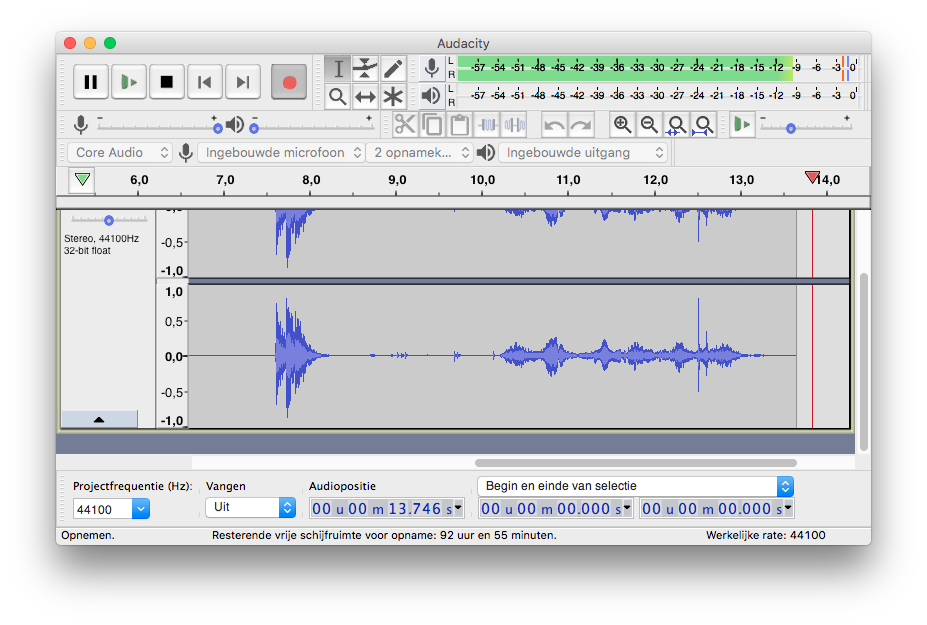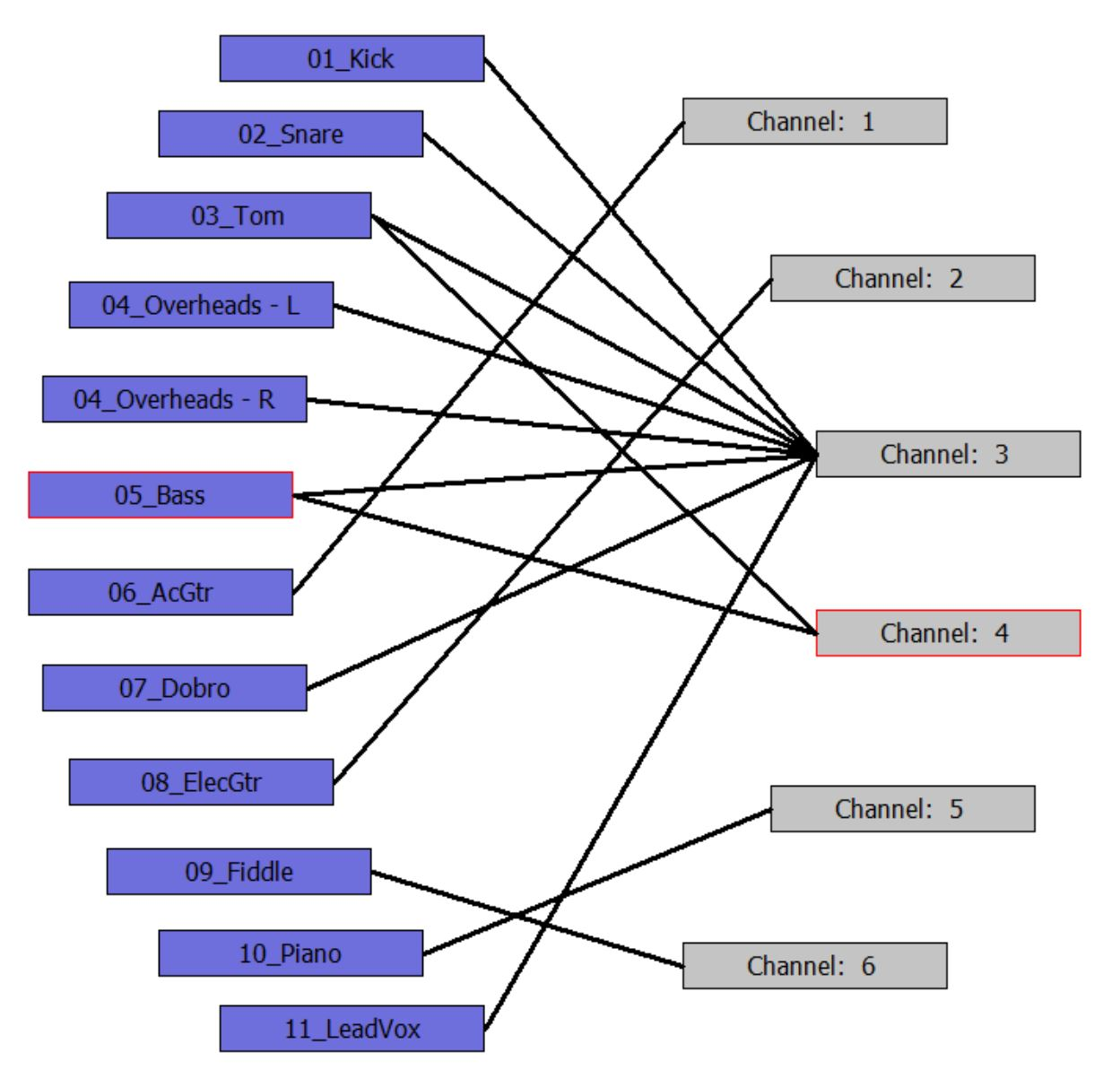Installing the FFmpeg Import/Export Library on Windows. The optional FFmpeg library allows Audacity to import and export a much larger range of audio formats including M4A (AAC), AC3, AMR (narrow band) and WMA and also to import audio from most video files. Because of software patents, Audacity cannot include the FFmpeg software or distribute it from its own websites. Welcome to Audacity Audacity® is free, open source, cross-platform audio software for multi-track recording and editing. Audacity is available for Windows®, Mac®, GNU/Linux® and other operating systems. Check our feature list, Wiki and Forum. Download Audacity 2.1.3 Mar 17th, 2017: Audacity. Plug-ins: If you still have an “Audacity” installation folder for a version before 3.0.2, you will see working duplicates of Audacity’s shipped Nyquist plug-ins in the Generate, Effect or Analyze Menu. You may also see non-working duplicates of other previously shipped plug-ins.
Lame for Audacity is one of the best software for encoding mp3 files, which is free to download. It is compatible to all kinds of music and sound processing. Also, it gives so much fun to use from editing to the audio recording. And now, let’s start the exploration of how you can download and install lame. For more of the Audacity lessons, don’t forget to visit the Audacity website.
The Lame download includes two files. The one is Lame.exe: an mp3 encoding directory used for CD playback. And the other one is the Lame-enc.dll (ICL 11,1). This file is usable from the Windows database “.regedit.”
Lame’s latest version includes MPEG 1, 2, and 2.5. The new layers of VBR ABR and CBR encodings; and a free encoding engine. Besides, encoding is faster if your computer is well-equipped with at least a Pentium 4 processor or higher. The powerful audio presets will let you minimize noise interference.
Do you want to have all that it takes to manage Audacity like a pro? Check out our articles on how to use Audacity and Audacity remove background noise. You will surely be amazed how easy you can do it even the noise gate Audacity or how to autotune in Audacity.
ContentsDownload Lame for Audacity
The latest version of Audacity does not run on Chrome OS. Although not officially supported, you can run Audacity on a Chromebook under the Chrome version for Linux Ubuntu.
We wanted to give the best help for you to maximize your usage of Audacity. So click the button below to download Lame for Audacity on your device.
Download lame for audacityHow to install?
There is nothing so special about the installation of Lame for Audacity. After you download the file, click on it and install it on your computer. Keep on hitting the “Next” button until you finish. And that’s it to install Lame mp3 encoder. However, below are the steps on how to use and start the encoding of the file to mp3 format:- Open the Audacity and click on “Edit”
- Go to the “Preferences”
- Look for the tab labelled as “File Formats” and then click on “Find Library” button
- Look for “lame_enc.dll“ which you can find under “C:program fileslame for audacity“ select and click the “Open” to continue
- There are optional settings in the Audacity “Preferences.” There you can change the bit rate. Once you are done customizing the bit rate, you can now proceed in clicking “OK” to get back to the main Audacity screen
- Click the “File” and “Export to mp3”
- Save the file. The Audacity will require you to enter the ID3 tags for the artist’s name and title of the song. Click “Ok” to begin the encoding process of the file to mp3 format
Lame for Audacity Windows
You can either download or compile then install a compatible version of the Lame mp3 encoder. Locate Lame in library preferences after installation. Mostly, Linux distributions have a sort of package manager that identifies, fetches software packages from the web, and installs them for you. Once you open the package manager, locate Lame then install it if it is not yet installed.
Libraries Preferences
Some distributions like the Ubuntu(Current) package for Audacity with mp3 encoding and Libav linked to the relevant system Libraries. In the already packaged Audacity builds, you don’t have to locate LAME or FFmpeg as there are no libraries preferences for Audacity.
If you compile Audacity from source code, you can remove libraries’ preferences by configuring Audacity; Disable > Dynamic > Encoding. Finally, build Audacity that is linked to the LAME system. Also, you can locally compile FFmpeg or Libav if you so desire.
Can’t find MP3 Lame Library?
Mostly, Audacity locates the Lame Library automatically. The steps below are useful if the Lame option exists in Library preferences, and you also have a compatible version of Lame that is not installed in a standard location.
- Launch audacity, select edit > Preferences > Libraries on the list to the left side
- From the mp3 Export Library, a Lame version number displays to the right side of mp3. If LAME has been detected, you should export mp3 and skip the instructions below. However, if the mp3 Library states, “Not Found,” follow the steps below.
- Tap on the locating tab to the right of the mp3 Library
- On the dialog that appears, “Locate Linux” then select Browse
- A dialog box with “Where is Limp3lame.so.0, tap Open, > OK then OK to close Preferences.

Looking for an Audacity alternative? We also have it! You may also explore the Audacity VST enabler to use Audacity much better.
Final Thoughts
Audacity is widely used as a free audio editor and mp3 as the audio codec. Although both do not work together, from the beginning, there are many mp3 encoders on the web. Lame is one of the best but you have to make it work with Audacity.
If you have any questions about Lame, please leave them in the comment box below. We will be grateful to know where we can improve our posts.
 © Shutterstock It's easy to export Audacity files into MP3s. Shutterstock
© Shutterstock It's easy to export Audacity files into MP3s. Shutterstock- To export Audacity files as MP3s, you just need to use the 'Export' option in the program's 'File' menu.
- Older versions of Audacity can't export MP3s natively, and you'll need to install an add-on called the 'LAME MP3 encoder' to do so.
- When you export an Audacity file as an MP3 track, you can specify its name, artist, genre, and more.
- Visit Business Insider's Tech Reference library for more stories.
Audacity is a popular audio-editing program that's free, powerful, and easy to use.
Using Audacity, you can produce music, podcasts, and other audio projects without needing to buy an expensive commercial audio program.
When your audio project is completed, though, you typically need to save it as an MP3 so it can be published and shared.
Luckily, exporting Audacity files as MP3s only takes a moment. Here's how to do it using Audacity on your Mac or PC.
Check out the products mentioned in this article:

Apple Macbook Pro (From $1,299.00 at Apple)
Acer Chromebook 15 (From $179.99 at Walmart)
How to export Audacity files as MP3s
1. In Audacity, click 'File' at the top of the screen.
Gallery: 6 ways that Apple's next major iPhone OS update makes it much, much more like Android (Business Insider)
2. In the drop-down menu, click 'Export' and then choose 'Export as MP3.'
© Dave Johnson/Business Insider Save your audio as an MP3 via the Export menu. Dave Johnson/Business Insider3. At the bottom of the dialog box in the Format Options section, choose your MP3 settings. As a general rule, you'll get the best results by choosing 'Constant' for the 'Bit Rate Mode' rather than one of the variable bitrate options. Choose the bitrate from the 'Quality' drop-down menu (if in doubt, choose 192 kbps or higher) and then save your file.
Videos For Audacity Mp3
© Dave Johnson/Business Insider For best results, save your file as a constant bitrate MP3 at 192 kbps or higher. Dave Johnson/Business Insider4. In the 'Edit Metadata Tags' window, fill in as much information as you desire about your MP3 file. This data is entirely optional, but will be visible if you import your file into programs like iTunes. Click 'OK' when you're done.
© Dave Johnson/Business Insider This metadata may be visible in certain audio apps. Dave Johnson/Business InsiderHow to export Audacity files as MP3s using older versions of Audacity
Audacity Mp3 Edit
In older versions of Audacity, you couldn't convert audio to MP3 without first installing an MP3 encoder add-on to your Mac or PC. This is because the encoding library was protected by a patent, and couldn't legally be included with Audacity.
The patent has expired, though, and the most current version of Audacity includes the MP3 encoder. If you have an older version of Audacity, you can install the LAME MP3 encoder, and then restart Audacity.
However, it's easier to just install the latest version of Audacity. If you do, not only will you get built-in MP3 exports, but you'll receive an improved version of Audacity as well.

Analysis Features

Related coverage from Tech Reference:
Audacity Mp3 Tags




